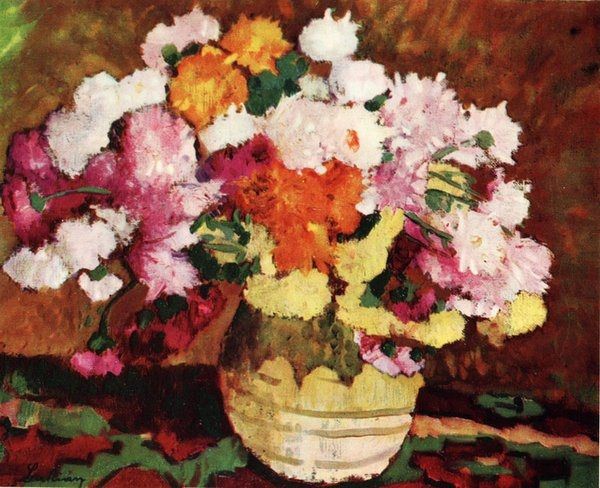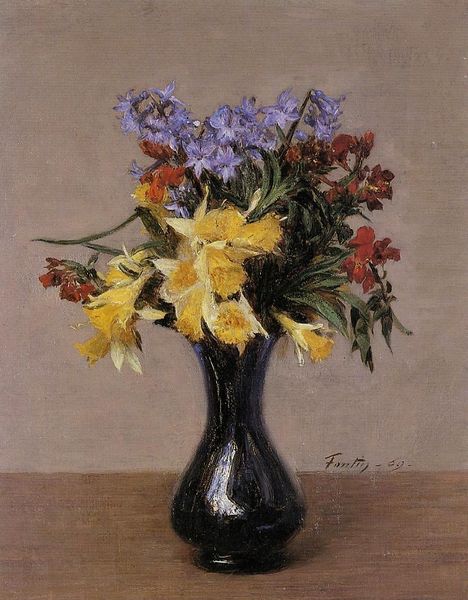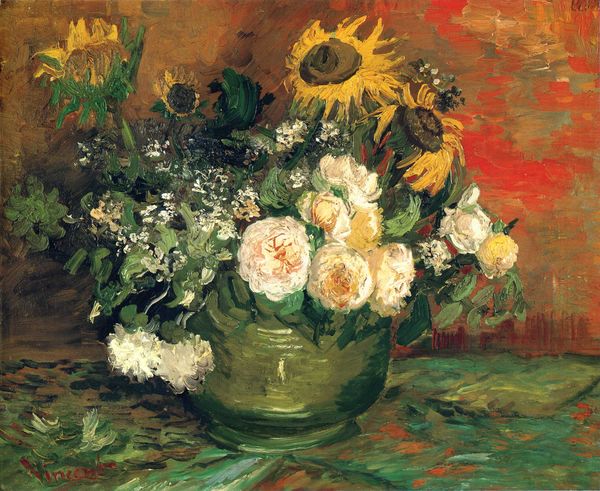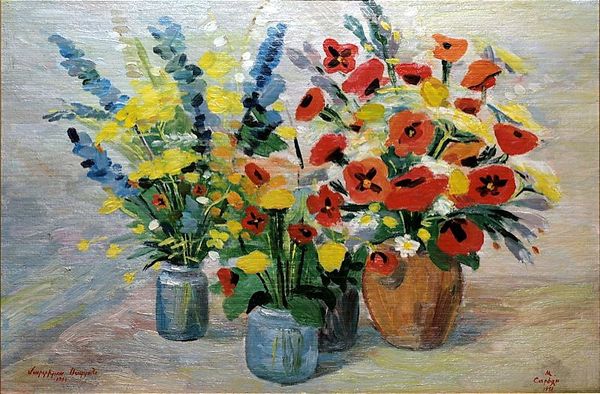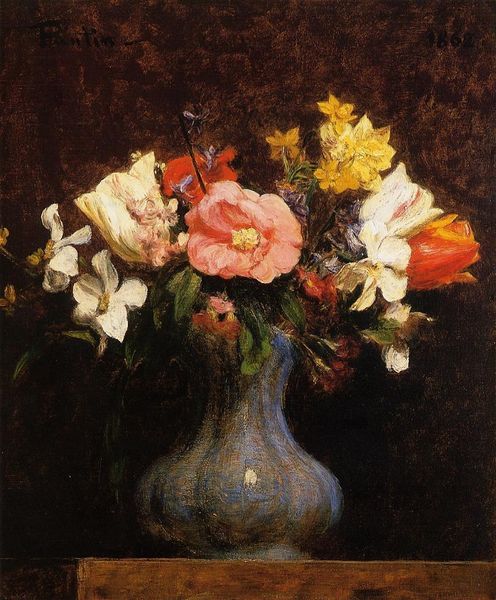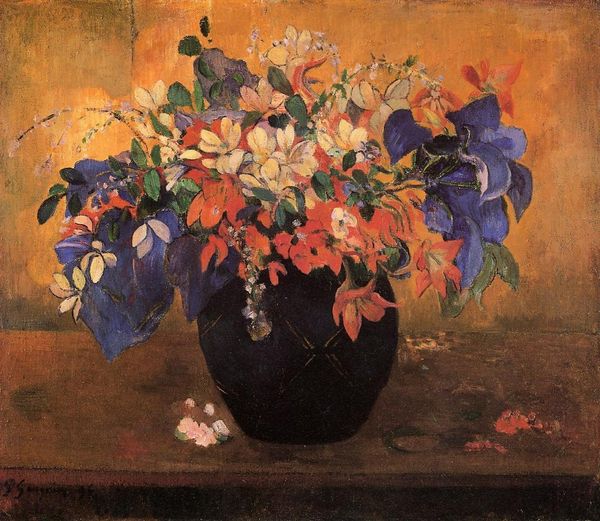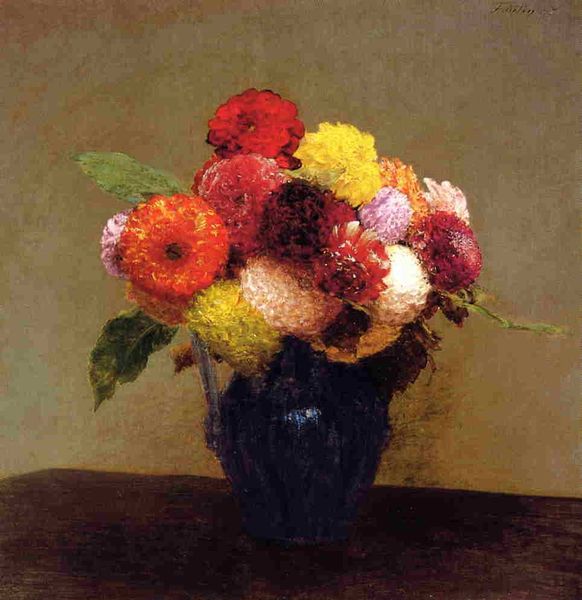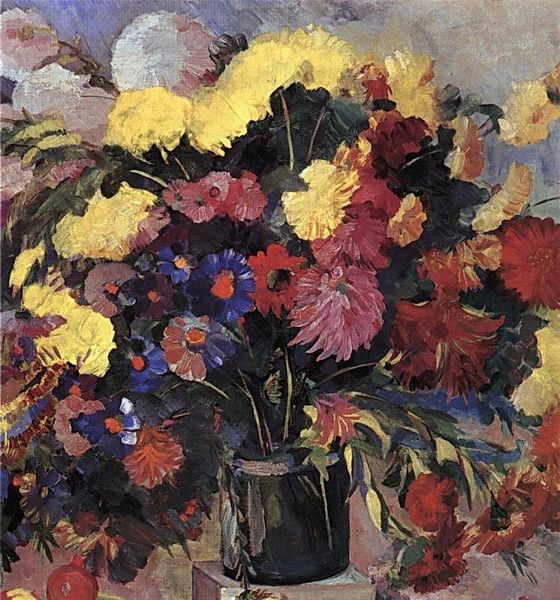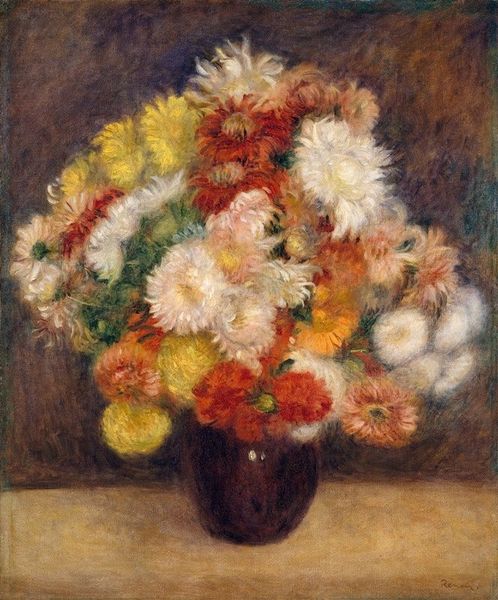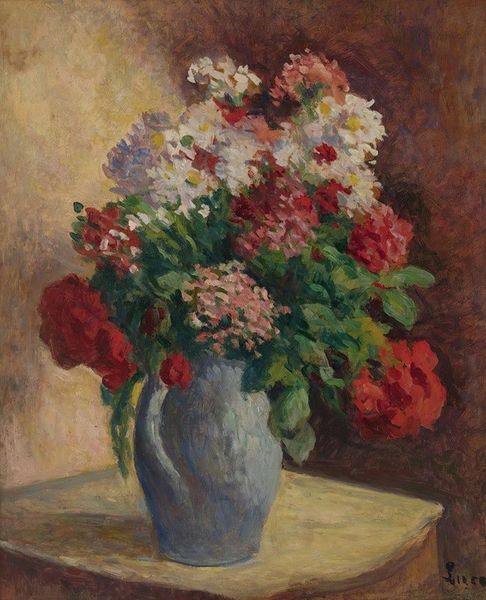
painting, oil-paint, impasto
#
naturalistic theme
#
painting
#
impressionism
#
oil-paint
#
flower
#
oil painting
#
impasto
#
plant
Copyright: Public domain
Editor: Here we have Stefan Luchian’s "Springtime Flowers," an oil painting characterized by visible brushstrokes and thick impasto. The choice of blooms feels joyful and energetic, even with the relatively subdued background. What do you make of this particular composition? Curator: Luchian painted this around the turn of the century. He and other artists began prioritizing the personal experience and expression in contrast to academic conventions. Given that, I am immediately drawn to how Luchian navigates Romanian society, presenting this idealized nature when Bucharest had a rich cafe culture, filled with intellectual and political debate. Does the flower arrangement serve as a form of escape or is it reflective of an interest in aesthetics apart from the broader societal shifts? Editor: So you're wondering if he's deliberately turning away from the social issues of the time or finding beauty within them? The still life has that complexity – it seems simple, but as we're exploring, there is a subtext, and a lot of context, involved in reading the piece. Curator: Exactly. Think about how art academies dictated what was considered worthy of representation. Luchian embracing the Impressionistic style with the flower further liberates painting, bringing forth the artist's subjectivity and challenging institutional norms in art. Where does Luchian fit into this narrative? Editor: I see what you mean. This isn't just a pretty picture; it’s an assertion of artistic freedom against a backdrop of strict artistic rules. So maybe the act of painting this way *is* a kind of political statement. It's changed my understanding, definitely! Curator: Right. Considering how Luchian used impressionistic style can provide valuable insight into the intricate and, often times, subtle interplay between art and the social landscape.
Comments
No comments
Be the first to comment and join the conversation on the ultimate creative platform.
